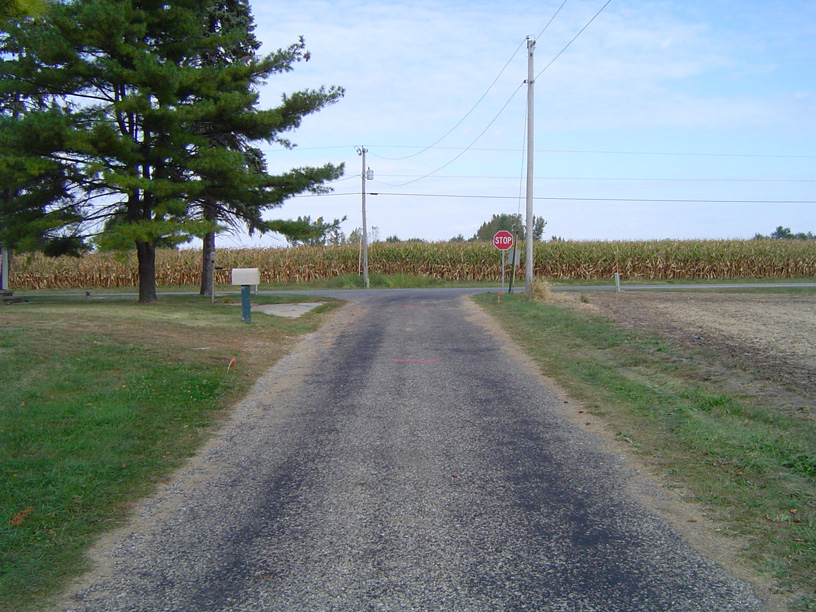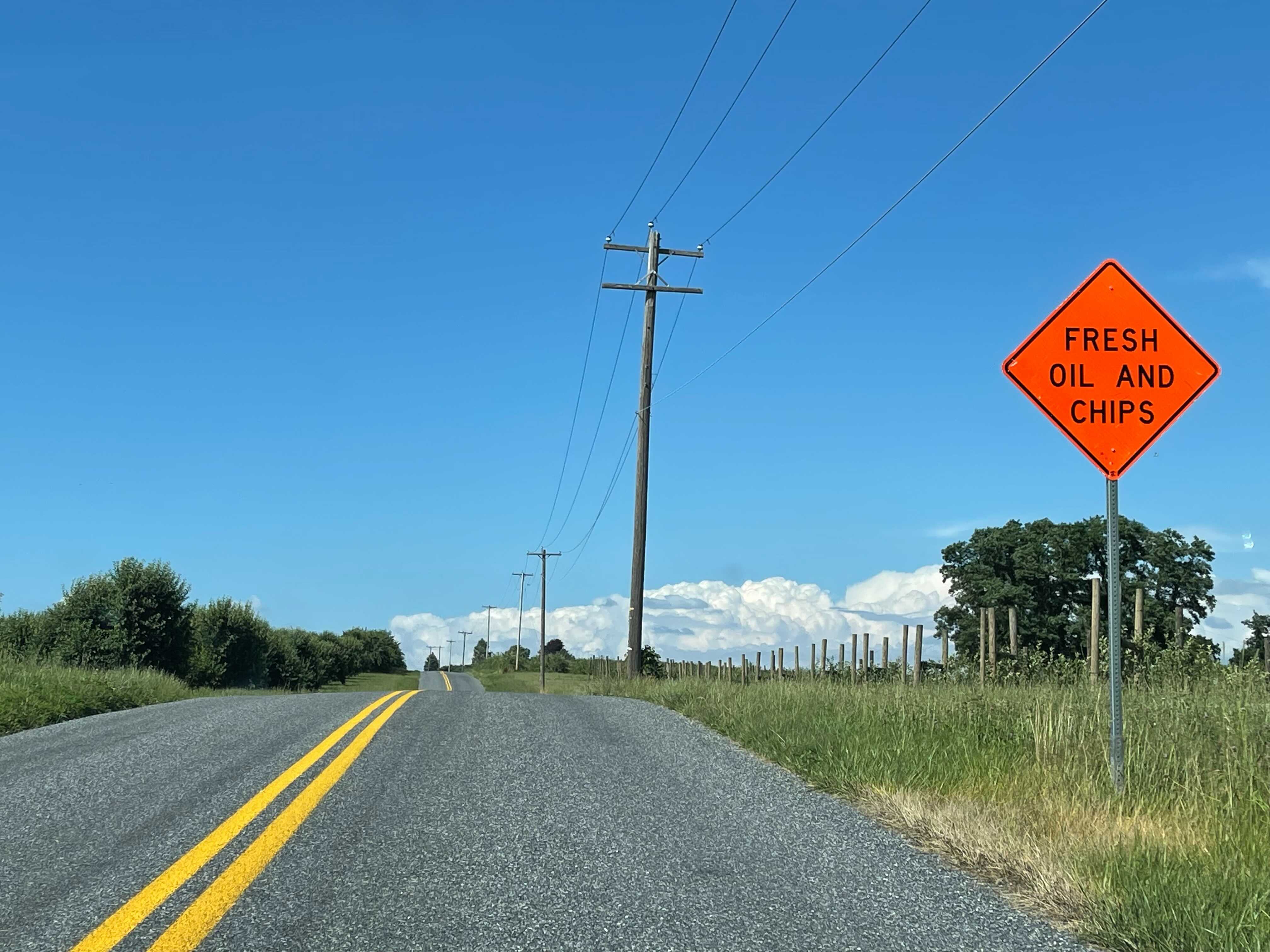chipseal on:
[Wikipedia]
[Google]
[Amazon]
 Chipseal (also chip seal or chip and seal or spray seal) is a pavement surface treatment that combines one or more layers of
Chipseal (also chip seal or chip and seal or spray seal) is a pavement surface treatment that combines one or more layers of

 Chipseals are constructed by evenly distributing a thin base of hot tar,
Chipseals are constructed by evenly distributing a thin base of hot tar,
 The rough wearing surface of the chipseal generates more
The rough wearing surface of the chipseal generates more
City of Grand Junction, CO page on ChipsealTRL Design Guide for Surface Dressing (Road Note 39)
{{Road types Pavements Building materials Stone (material) New Zealand inventions
 Chipseal (also chip seal or chip and seal or spray seal) is a pavement surface treatment that combines one or more layers of
Chipseal (also chip seal or chip and seal or spray seal) is a pavement surface treatment that combines one or more layers of asphalt
Asphalt most often refers to:
* Bitumen, also known as "liquid asphalt cement" or simply "asphalt", a viscous form of petroleum mainly used as a binder in asphalt concrete
* Asphalt concrete, a mixture of bitumen with coarse and fine aggregates, u ...
with one or more layers of fine aggregate. In the United States, chipseals are typically used on rural roads carrying lower traffic volumes, and the process is often referred to as asphaltic surface treatment. This type of surface has a variety of other names including tar-seal or tarseal, tar and chip, sprayed seal surface dressing, or simply seal.
In Australia as well as New Zealand, chipseal roads are common, including usage on major highways.
Uses
Chipsealing is cheaper than resurfacing anasphalt concrete
Asphalt concrete (commonly called asphalt, blacktop, or pavement in North America, and Tarmacadam, tarmac or bitumen macadam in the United Kingdom and the Republic of Ireland) is a composite material commonly used to surface road surface, roads ...
or a Portland cement
Portland cement is the most common type of cement in general use around the world as a basic ingredient of concrete, mortar (masonry), mortar, stucco, and non-specialty grout. It was developed from other types of hydraulic lime in England in th ...
concrete pavement, but not as long-lasting.

Installation
 Chipseals are constructed by evenly distributing a thin base of hot tar,
Chipseals are constructed by evenly distributing a thin base of hot tar, bitumen
Bitumen ( , ) is an immensely viscosity, viscous constituent of petroleum. Depending on its exact composition, it can be a sticky, black liquid or an apparently solid mass that behaves as a liquid over very large time scales. In American Engl ...
or asphalt onto an existing pavement and then embedding finely graded aggregate into it. The aggregate is evenly distributed over the hot seal spray, then rolled into the bitumen using heavy rubber tired rollers creating a paved surface. A chip-seal-surfaced pavement can optionally be sealed with a top layer, which is referred to as a fog seal or enrichment.
The introduction of polymer-modified bitumen and emulsion binder has increased chipseal's ability to prevent crack reflection and improve stone retention by improving the properties of the bitumen binder. Newer techniques use asphalt emulsion
An emulsion is a mixture of two or more liquids that are normally Miscibility, immiscible (unmixable or unblendable) owing to liquid-liquid phase separation. Emulsions are part of a more general class of two-phase systems of matter called colloi ...
(a mixture of liquid asphalt, surfactant
Surfactants are chemical compounds that decrease the surface tension or interfacial tension between two liquids, a liquid and a gas, or a liquid and a solid. The word ''surfactant'' is a Blend word, blend of "surface-active agent",
coined in ...
, and water) instead of asphalt. This has been shown to help reduce aggregate loss and reduce cost of installation, but can increase stripping (separation of the binder from the aggregate). It reduces emissions of volatile organic compound
Volatile organic compounds (VOCs) are organic compounds that have a high vapor pressure at room temperature. They are common and exist in a variety of settings and products, not limited to Indoor mold, house mold, Upholstery, upholstered furnitur ...
s (VOCs) due to the lower solvent content. New methods also utilize cross linking styrene acrylic polymers which also provide quality water resistance. Chips precoated with about one percent bitumen have been used successfully to minimize aggregate loss and to give the surface a black look.
It can keep good pavement in good condition by sealing out water, but provides no structural strength and will repair only minor cracks. While the small stones used as surface yield a relatively even surface without the edges of patches, it also results in a very rough surface that leads to louder rolling noise from automobile wheels.
Although chipseal is an effective low-cost way to repair roads, it has some drawbacks. Loose crushed stone
Crushed stone or angular rock is a form of construction aggregate, typically produced by mining a suitable rock deposit and breaking the removed rock down to the desired size using crushers. It is distinct from naturally occurring gravel, whi ...
is often left on the surface, owing to underapplication of bitumen or overapplication of stone. If not removed, this can cause safety and environmental problems such as cracked windshields, chipped paint, loss-of-control crashes (especially for motorcyclists, bicyclists and small trucks), and deposition of foreign material into drainage courses. Therefore, it is very important to sweep the road after the emulsion sets. As mentioned earlier, this problem can be minimized by using chips precoated with bitumen. Overapplication of emulsion can lead to bleeding
Bleeding, hemorrhage, haemorrhage or blood loss, is blood escaping from the circulatory system from damaged blood vessels. Bleeding can occur internally, or externally either through a natural opening such as the mouth, nose, ear, urethr ...
, a condition where the excess asphalt rises to the surface, creating a very smooth surface that is very slippery when wet and bubbling in the hotter summer months. As cars drive over it the tires kick up this tarry substance on to the side of the car. It can only be cleaned off with a solvent remover or diesel fuel.
Chip seal installation over gravel roads
Chip seal products can be installed over gravel roads to eliminate the cost of grading, road roughness, dust, mud, and the cost of adding gravel lost from grading. Adding chip seal over gravel is about 25% of the price of resurfacing withasphalt
Asphalt most often refers to:
* Bitumen, also known as "liquid asphalt cement" or simply "asphalt", a viscous form of petroleum mainly used as a binder in asphalt concrete
* Asphalt concrete, a mixture of bitumen with coarse and fine aggregates, u ...
, $170,000 for a 4-mile project done in Minnesota compared to $760,000 had it been redone with asphalt. The surface lasts for 5–7 years. Patch work can be done with a bucket of tar sealer and more chip seal over the top. The chip seal matt surface handles thermal variation well and doesn't crack like asphalt roads. A thin penetrating emulsion primer (PEP) coat is usually applied over the gravel before the chip seal matt is applied.
Noise and vibrational effects
 The rough wearing surface of the chipseal generates more
The rough wearing surface of the chipseal generates more roadway noise
Roadway noise is the collective sound energy emanating from motor vehicles. It consists chiefly of road surface, tire, engine/transmission, aerodynamic, and Brake, braking elements. Noise of rolling tires driving on pavement is found to be the ...
at any operating speed than do typical asphalt or concrete surfaces. These sound intensities increase with higher vehicle speeds. There is a considerable range in acoustical intensities produced depending upon the specific tire tread design and its interaction with the roadway surface type.
The rough surface causes noticeable increases in vibration and rolling resistance for bicyclists, and increased tire wear in all types of tires.
Vehicle speed can affect the set up time with chipseal. Shortly after construction (depending on weather conditions) the set speed for chipseal is for the first 24–48 hours after construction.
See also
*Macadam
Macadam is a type of road construction pioneered by Scottish engineer John Loudon McAdam , in which crushed stone is placed in shallow, convex layers and compacted thoroughly. A binding layer of stone dust (crushed stone from the original mat ...
*Asphalt
Asphalt most often refers to:
* Bitumen, also known as "liquid asphalt cement" or simply "asphalt", a viscous form of petroleum mainly used as a binder in asphalt concrete
* Asphalt concrete, a mixture of bitumen with coarse and fine aggregates, u ...
* Bituminous surface
References
External links
City of Grand Junction, CO page on Chipseal
{{Road types Pavements Building materials Stone (material) New Zealand inventions